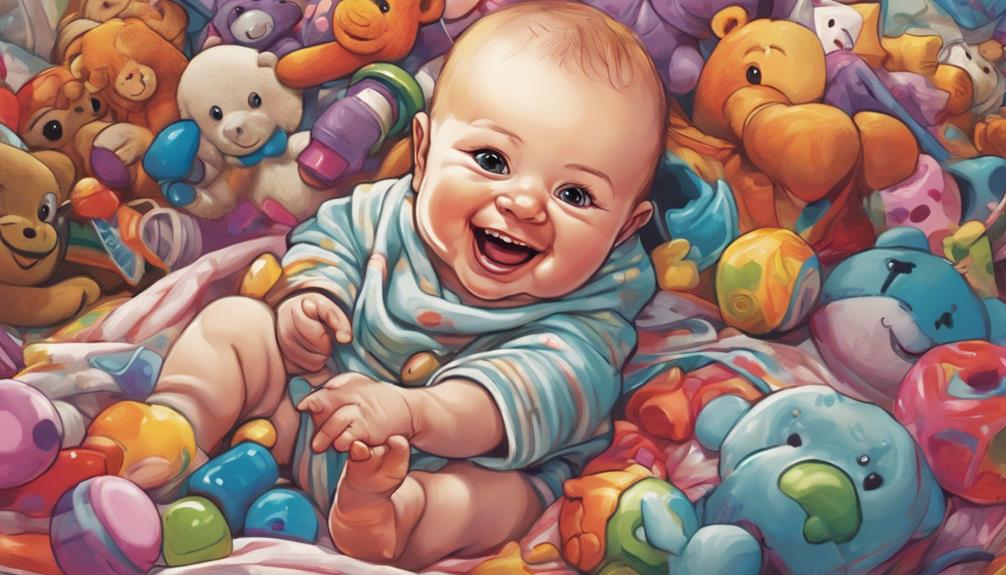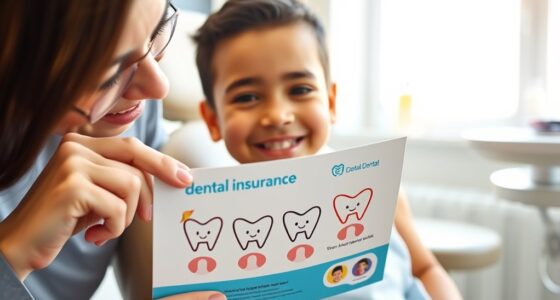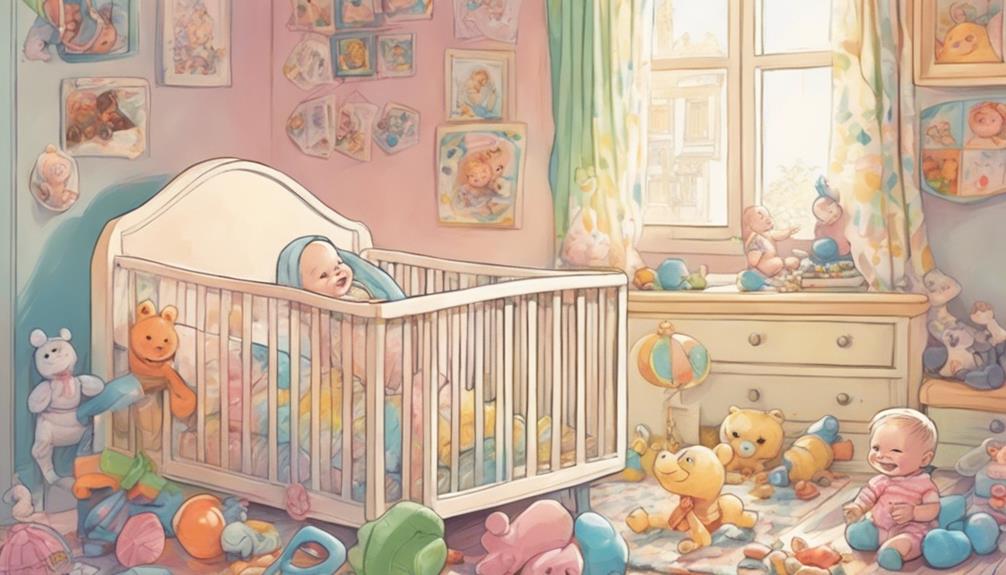Babies typically start getting their teeth around six months, but some may begin as early as three months or as late as twelve months. The first teeth you can expect are the lower central incisors, usually coming in between six to ten months. During this time, you might notice signs like swollen gums, increased drooling, or your baby becoming crankier than usual. By age three, most children have a full set of 20 primary teeth. Understanding what's normal can help, and there's more to explore about soothing teething discomfort and dental care! As the baby teething timeline progresses, the upper central incisors typically come in next, followed by the lateral incisors and first molars. It’s important to continue monitoring your baby’s teething progress and provide them with age-appropriate teething toys or foods to help alleviate discomfort. Additionally, scheduling regular dental check-ups as part of your baby’s dental care routine can help ensure their teeth are developing properly. Understanding the baby teething timeline can also help parents anticipate and address any potential teething-related issues.
Key Takeaways
- Teething typically begins around 6 months, though some babies may start as early as 3 months or as late as 12 months.
- The first tooth usually erupts between 6-10 months, with lower central incisors being the first.
- Upper central incisors generally appear between 8-12 months, following a predictable order.
- By age 3, most children will have a complete set of 20 primary teeth.
Understanding Teething
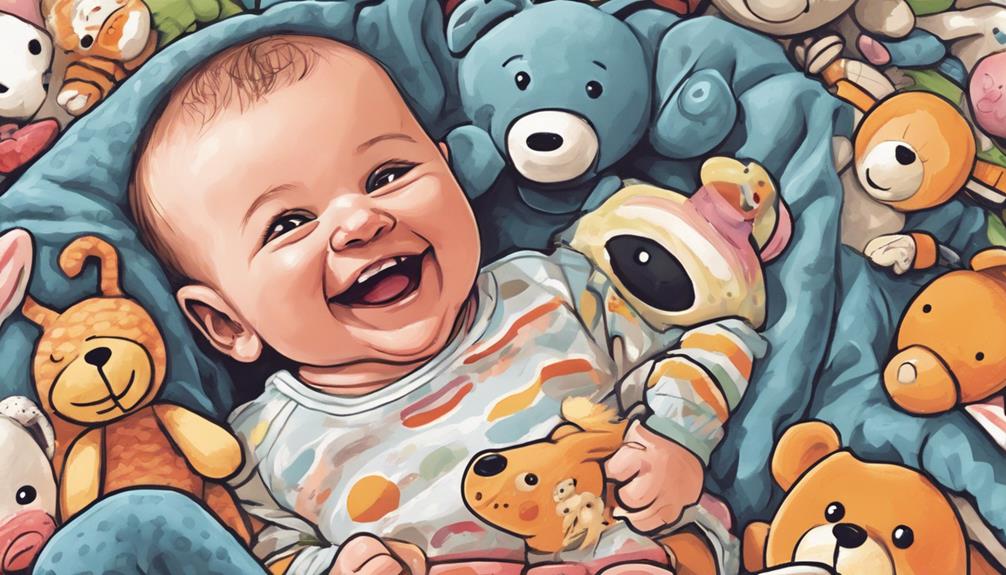
Teething is a natural process that usually kicks off around 6 months, though some babies might start as early as 3 months or as late as 12 months. When your baby is teething, you'll likely notice that the first tooth appears around this time. Typically, the lower front teeth, or central incisors, are the first to erupt between 6-10 months. As babies start teething, you may observe swollen gums and signs of teething pain, which can make your little one cranky and uncomfortable.
Understanding the teething timeline helps you prepare for what's to come. While some babies sail through this stage with minimal fuss, others might experience discomfort that requires extra care. By age 3, your child will have a full set of 20 primary teeth, following a predictable order, including lateral incisors, first molars, canines, and second molars.
Don't forget about dental care during this time! Even if your baby is teething, it's essential to keep those tiny teeth clean to establish good habits early on. Remember, every child's experience with teething is unique, so stay attentive to your baby's needs.
Teething Timeline
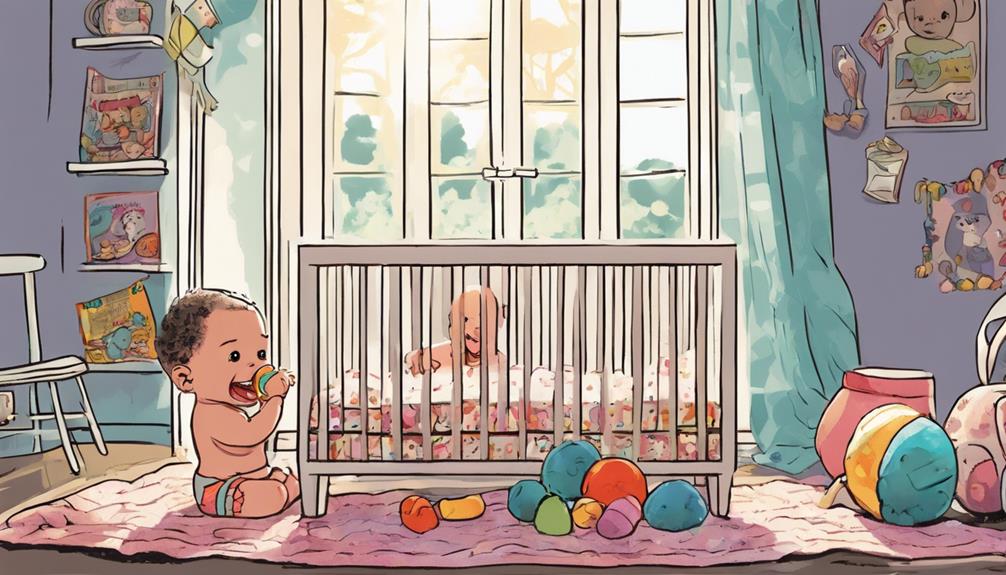
When can you expect your baby's teeth to start coming in? The teething timeline varies for each baby, but you can generally anticipate some key milestones. Most babies begin teething around 6 months, though some might start as early as 3 months or as late as 12 months.
Here's a simple breakdown:
- Lower Central Incisors: These are usually the first teeth to come in, erupting between 6 to 10 months.
- Upper Central Incisors: Following the lower incisors, these typically appear between 8 to 12 months.
- Complete Set of Primary Teeth: By the age of 3, your baby should have a full set of 20 primary teeth, including lateral incisors, first molars, canines, and second molars.
Keep in mind that there's individual variability in tooth eruption. Some babies may not follow this exact timeline, experiencing differences in the onset and order of teething.
Pay attention to your baby's unique development, and remember that this is a normal part of growing up!
Signs of Teething
Noticing increased drooling and a desire to chew on objects can be some of the first signs your baby is teething.
Around 4 to 7 months, you might see your little one gnawing on their fingers, toys, or teething rings as they seek relief from the discomfort of swollen gums. This behavior is normal and indicates that their first teeth are on the way.
You may also notice irritability or crankiness during this time. While some babies handle teething with little fuss, others might show signs of distress.
Tender, swollen gums are a clear indicator that teething is occurring, and you might even observe a slight elevation in their temperature. However, keep an eye on their overall health, as a high fever can signal other issues.
Changes in eating patterns can also arise; your baby might refuse to eat due to gum discomfort.
Additionally, disrupted sleep patterns are common as they navigate this challenging phase.
Soothing Teething Discomfort
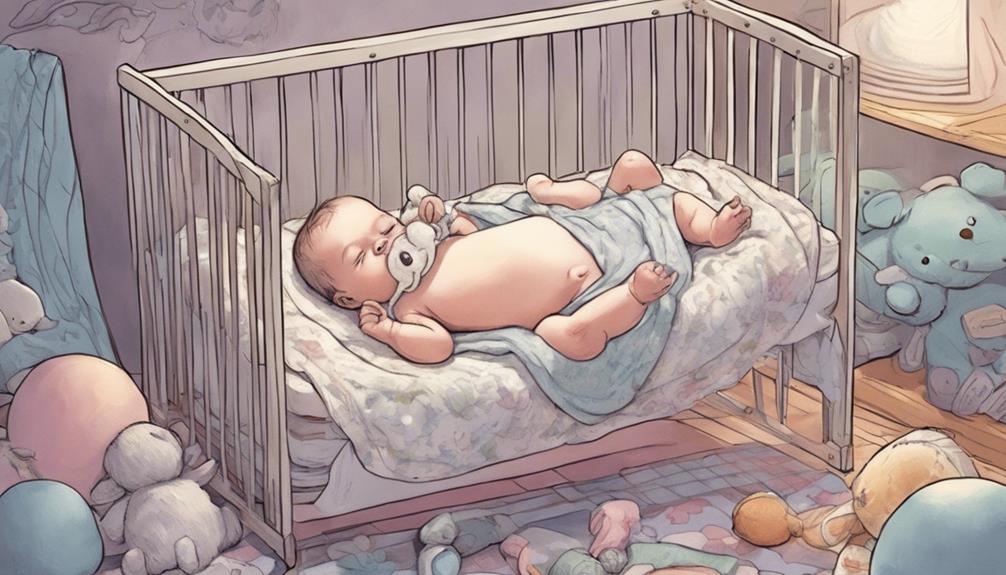
You can help ease your baby's teething discomfort with a few simple techniques that provide relief for sore gums. Here are three effective methods to soothe your little one during this challenging time:
- Gentle Massage: Using a clean finger, gently massage your baby's gums. This can provide immediate relief from teething discomfort and help ease the pressure they're feeling.
- Chilled Teething Rings: Offer your baby chilled teething rings or frozen washcloths to soothe swollen gums. Just be sure to avoid teething rings filled with liquid, as they can break and pose a choking hazard.
- Teething Biscuits: Teething biscuits can also help alleviate discomfort. However, always monitor your baby closely while they chew to prevent any choking hazards.
Keep in mind that a slight rise in temperature can occur during teething, but if it exceeds 100.4°F, consult a pediatrician to rule out other health issues.
Always check with your pediatrician before giving any pain relief medications, especially for infants under two years old.
With these techniques, you can help your baby navigate the teething process more comfortably.
Dental Care for Infants

Establishing good dental care for your infant is vital, even before their first tooth appears. Begin by gently cleaning your baby's gums with a soft cloth or gauze daily. This habit sets the foundation for oral hygiene. Once that first tooth emerges, introduce a soft-bristled toothbrush and use a smear of fluoride toothpaste for effective cleaning.
To help you keep track of your baby's dental care, here's a simple guide:
| Dental Care Step | Recommendation |
|---|---|
| Clean gums | Use a soft cloth daily |
| First tooth care | Use a soft-bristled toothbrush |
| Toothpaste | Apply a smear of fluoride toothpaste |
| Brushing frequency | Twice a day (after breakfast & bedtime) |
| First dental visit | By first birthday or when first tooth erupts |
Brushing your child's teeth twice daily is essential to prevent decay. Keep an eye on their technique and assist them until they're about 7 or 8 years old. Schedule that first dental visit early to guarantee proper dental development and hygiene education. Starting early sets your baby up for a lifetime of healthy teeth!
Frequently Asked Questions
When Should I Expect My Baby's First Teeth?
You can expect your baby's first teeth to appear around 6 months, but some little ones might surprise you and start as early as 3 months or as late as 12 months. Patience is key!
Is It Normal for a Baby to Have No Teeth at 10 Months?
Imagine a garden where some flowers bloom early, while others take their time. It's normal for your baby to have no teeth by 10 months; teething varies widely, and many don't have teeth until later.
At What Age Do Babies Get Teeth Chart?
You can refer to a teething chart for age ranges. Generally, babies start getting teeth between 6 to 12 months, with lower central incisors appearing first, followed by upper central incisors and other teeth.
Is My 3 Month Old Teething?
Like a storm brewing on the horizon, your 3-month-old might show signs of teething, but true teething usually starts later. Keep an eye out for discomfort, and consult your pediatrician if unsure.
Conclusion
To conclude, teething is an important milestone in your baby's development, typically starting around six months. Some babies may start teething as early as three months, while others may not begin until they are a year old. It’s important to remember that every baby is different and will experience teething in their own unique way. While some may have a more difficult time with teething symptoms, such as irritability and drooling, others may hardly show any signs at all. It’s also worth noting that a baby born with teeth is a rare occurrence, but it can happen in some cases.
Did you know that by age three, most kids have a full set of 20 primary teeth?
This process can be tough, but understanding the signs and knowing how to soothe discomfort can make it easier for both you and your little one.
Remember, maintaining dental care from an early age sets the foundation for a healthy smile in the future!
